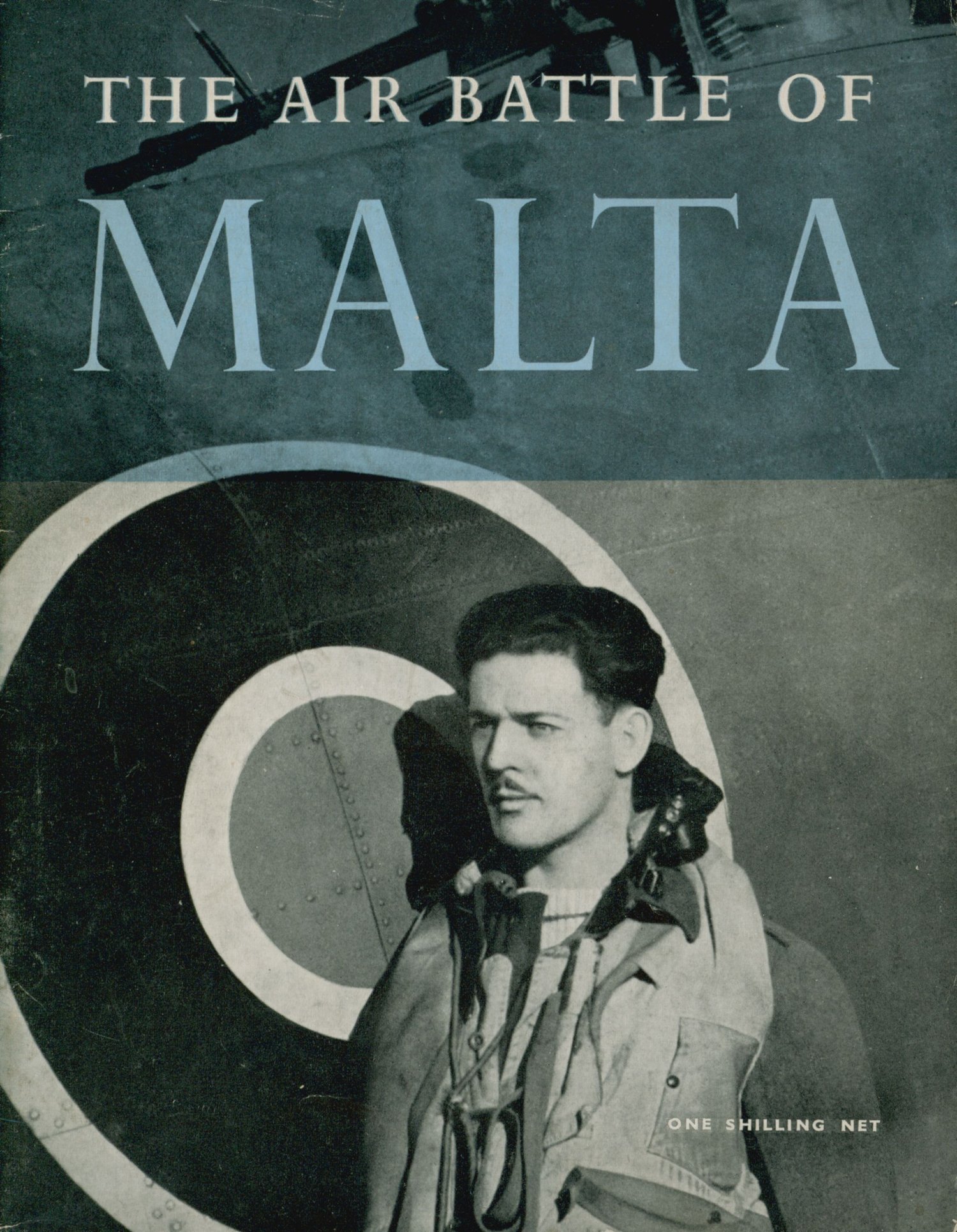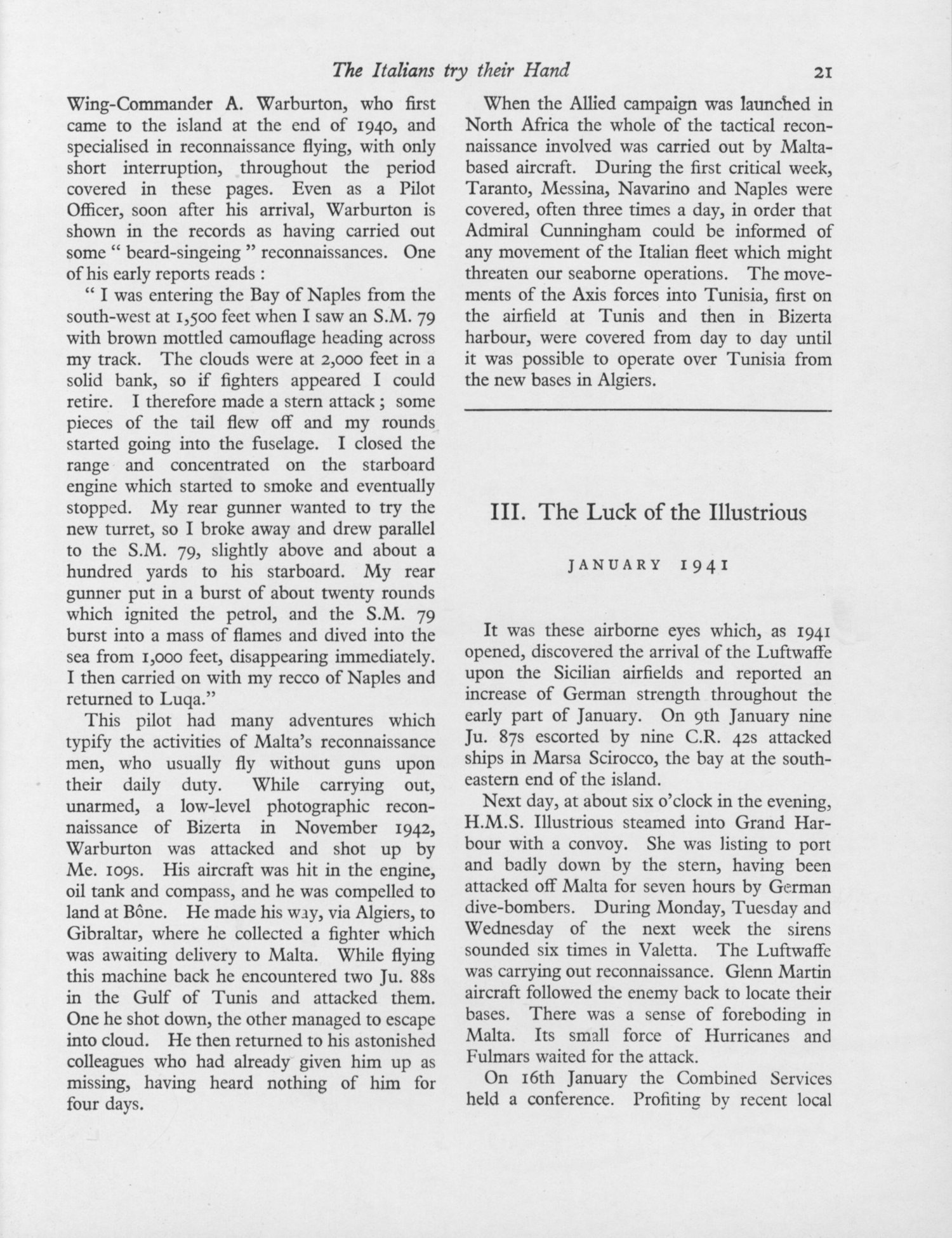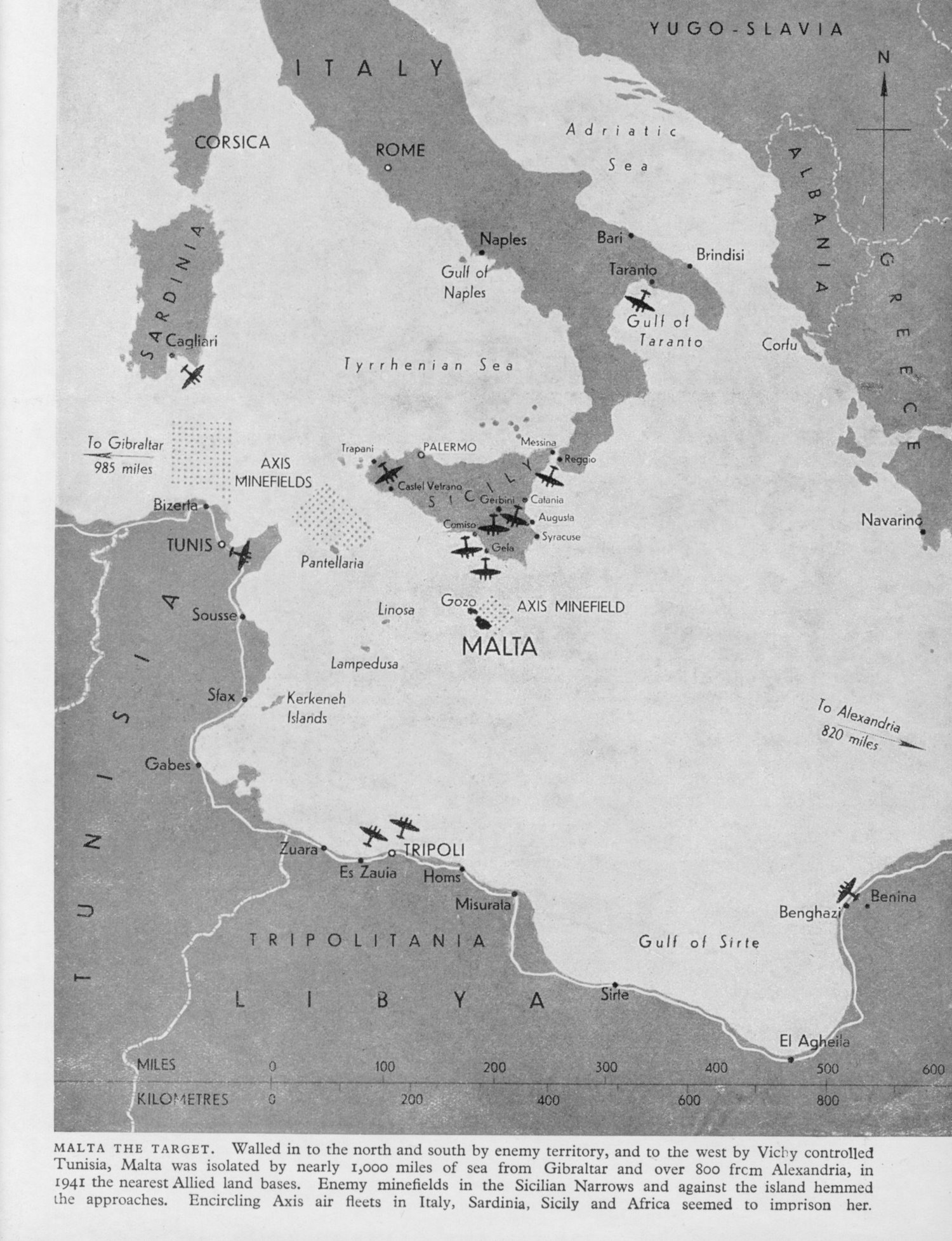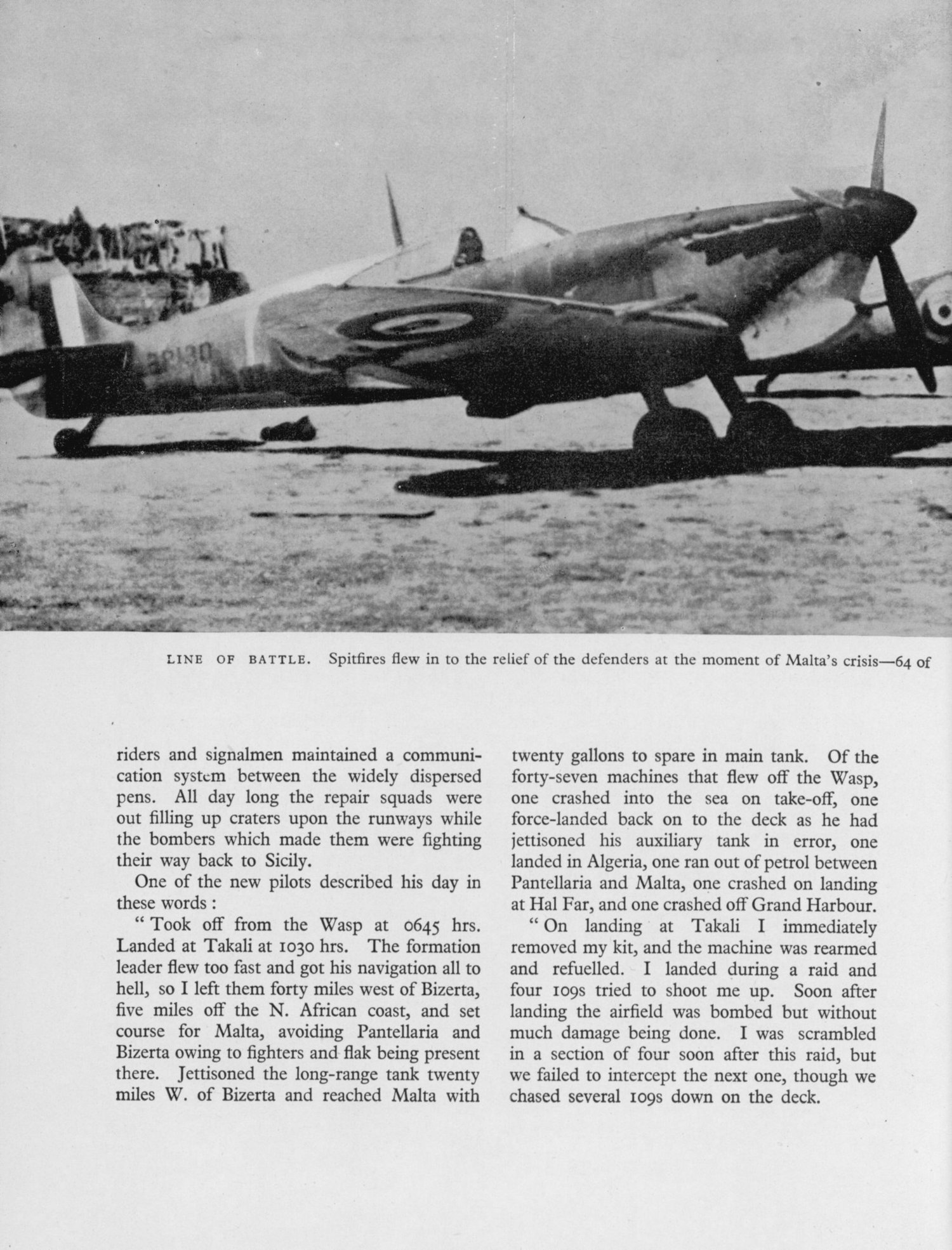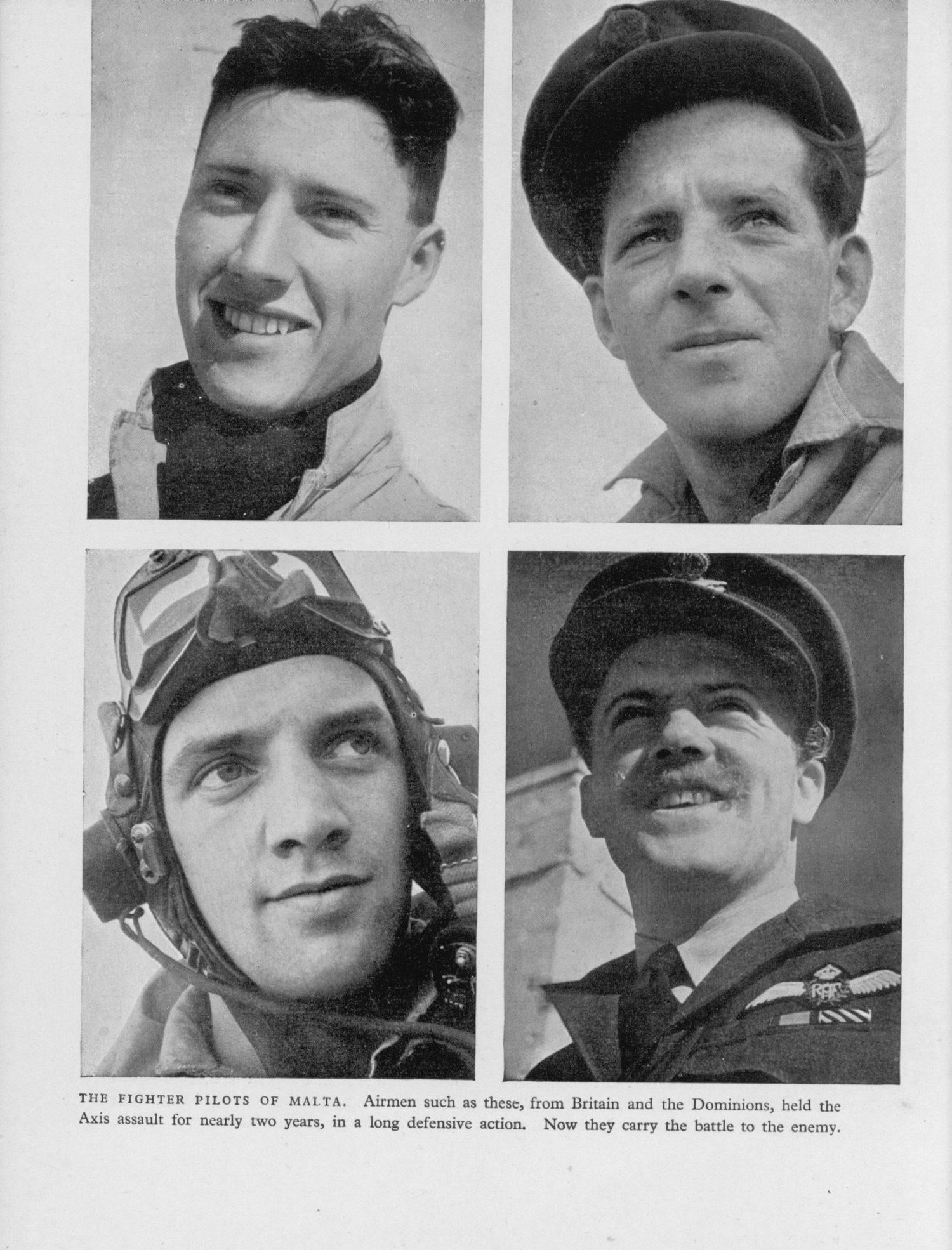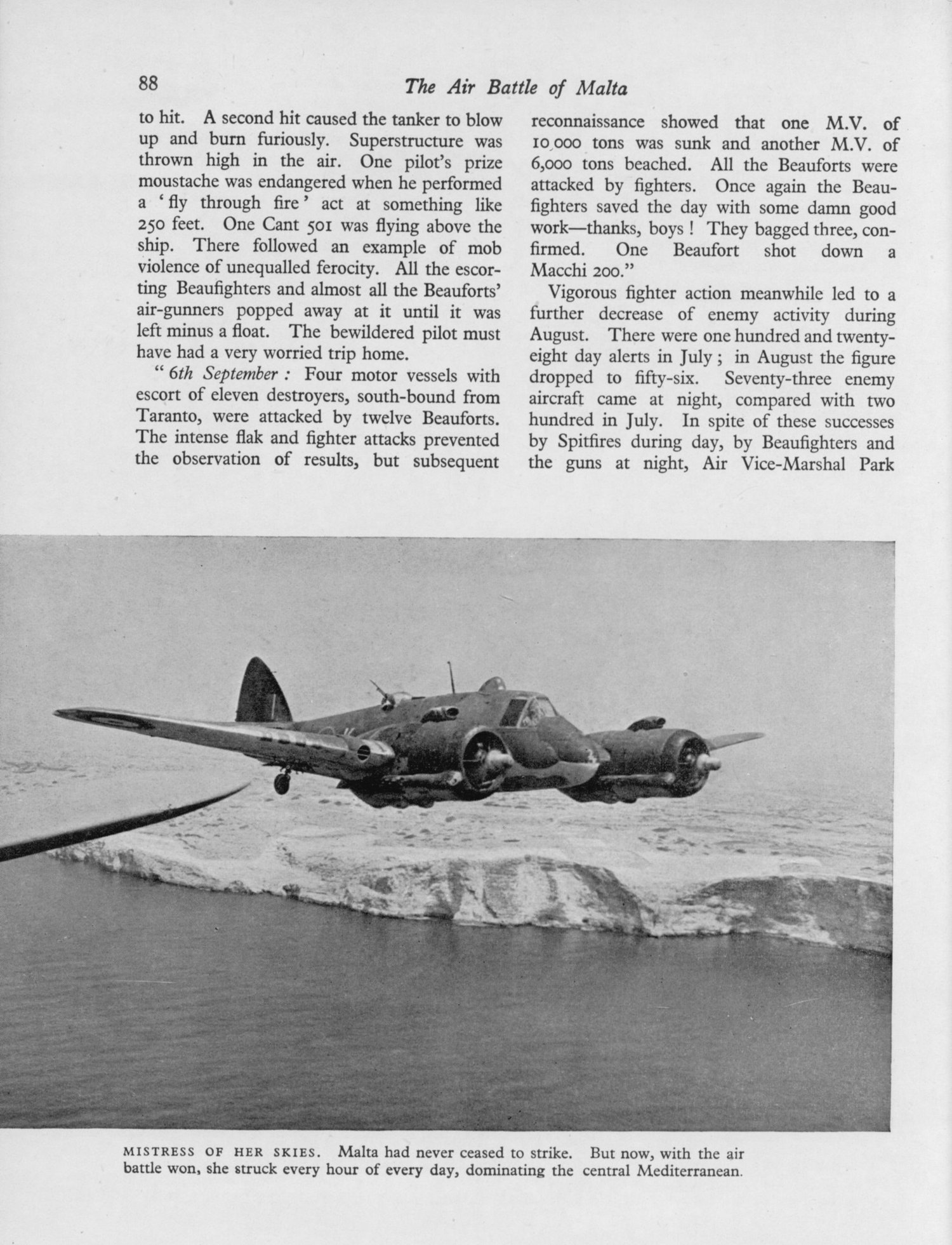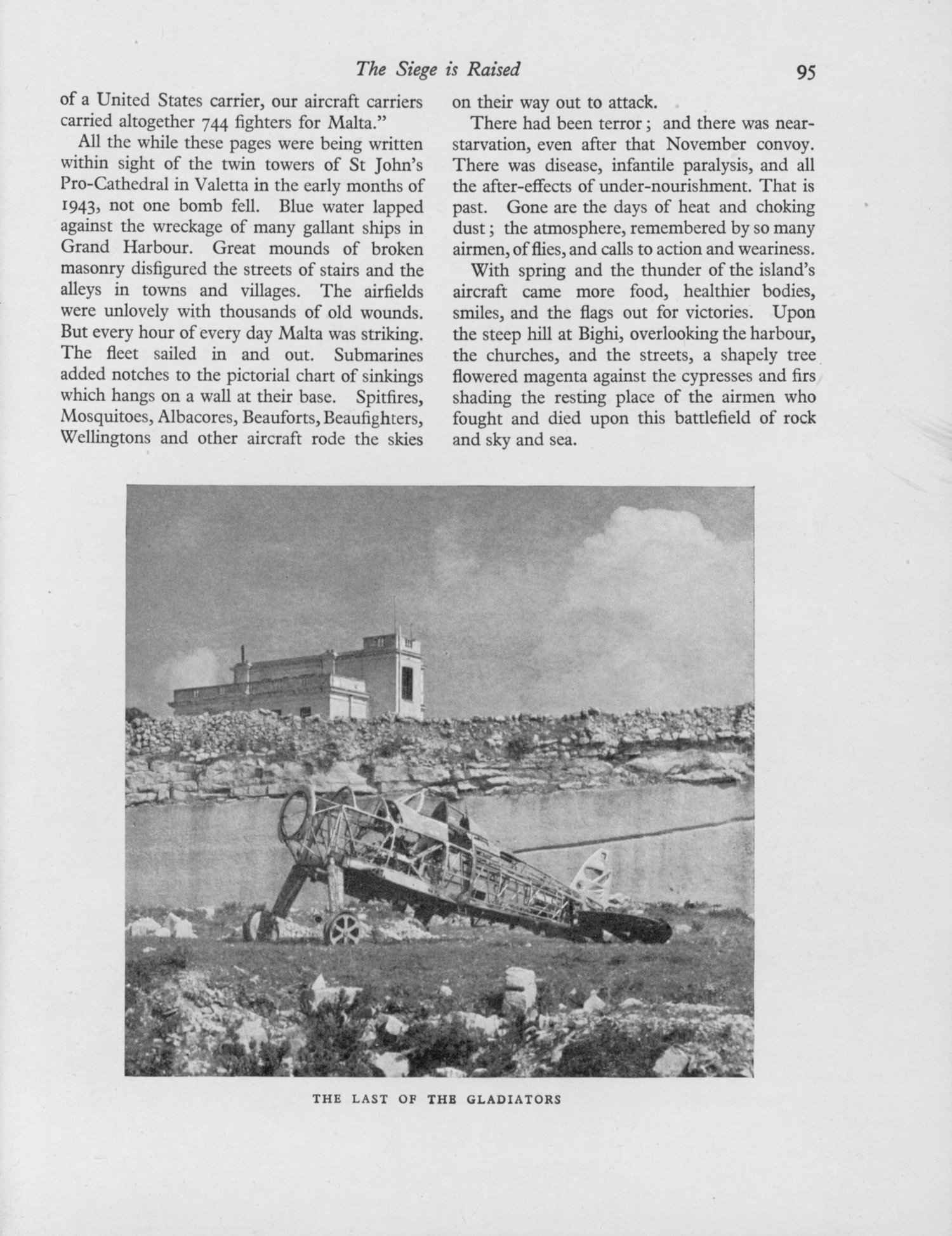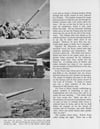The Air Battle of Malta: The Official Account of the R.A.F. in Malta, June 1940 to November 1942
The Air Battle of Malta
The Official Account of the R.A.F. in Malta, June 1940 to November 1942
Prepared for the Air Ministry by the Ministry of Information
His Majesty's Stationary Office, London, 1944
In the clear heat of a Mediterranean summer morning, less than seven hours after Italy entered this war, the first raiders came to Malta. Within the rock-carved bastions of the Knights of St John in Valetta, and across Grand Harbour in the area of the Three Cities, Senglea, Cospicua and Vittoriosa, the sirens were heard for the first time.
From that day, nth June 1940, until the winter of 1942, when siege-raising ships fought through to the island, the Battle of Malta was waged. It was a battle against the Germans and the Italians, against superior numbers, shortage of equipment, isolation, terror and hunger. From this battle Malta emerged in 1943 to dominate the central Mediterranean as a striking base, a bright weapon in the armory of the Allied forces, more deadly than ever before in the long history of warfare in the Middle Sea.
The island was not a single weapon wielded as an isolated arm ; it had an integral part to play in Mediterranean strategy as a whole. Malta is linked by air with both extremes of the Middle Sea—with Gibraltar and Egypt. Every theatre of war in the Mediterranean was within range of its aircraft, and not the least important task of its pilots was to watch from their central position all the movements of the enemy. The battles in the Mediterranean hinged upon supplies, on the capacity of both sides to reinforce themselves across a limited area of sea and across desert sand. The geographical situation of the island was vital to the Allies in the supply conflict: but for Malta, Rommel in 1942 might well have pressed on to Alexandria.
Aircraft and submarines from the island, with perseverance and daring worthy of the traditions of the Knights of St John, ravaged the enemy’s supplies. Malta-based aircraft alone sank or damaged over half a million tons of his shipping. The island’s reconnaissance aircraft sought and brought news of the enemy in Italy, Sicily, North Africa and the Greek Archipelago. Malta was always linked with the fortunes of the armies in the Western Desert. Never in history was the island’s strategical significance greater.
To one approaching from the air, as so many of its enemies have approached it, Malta looks at first like a leaf, green or yellow according to the season, floating upon the sea. The whole of the island, owing to its small compass, is visible for a long time, its airfields and defenses, its churches and farms close-knit and compact. Once the navigator has found it, Malta seems a simple, rather fragile and easy target. It is a memorable view, either to friend or foe.
Contents
- An Outpost of the Brave
- The Italians Try their Hand
- The Luck of the Illustrious
- Second Assault: The Luftwaffe Comes and Goes
- Malta’s Flashing Sword
- The Luftwaffe Returns for the Kill
- Onslaught on the Convoys
- Malta Fights for Her Life
- Climax of Battle: The Defenders’ Triumph
- The Fighters Go Out to Attack
- Some Relief for the Garrison: The August Convoy
- Offensive Against Rommel
- The Last Blitz: The Siege is Raised
100 pages
3 maps
66 photos

